Abstract 4/2022
Table of content
Arkadiusz Karcz – Concept of the Poviat-Municipal Association “Góry Sowie Public Transport”
Tomasz Gnabasik, Łukasz Łochowicz – Infrastructure and traffic solutions to improve accessibility of public transport during implementation of major infrastructure investments in Poznań
Paweł Gruszczyński – Support programmes for the management of urban public transport vehicles in Kraków
Sylwia Sopata, Zofia Bryniarska – Analysis of the operation of selected interchange nodes in Nowy Sącz based on passenger opinions. Part I
Abstracts
Arkadiusz Karcz
Concept of the Poviat-Municipal Association “Góry Sowie Public Transport”
Abstract: The municipality of Bielawa is planning to transform the current inter-municipal public transport service into a poviatmunicipal system in 2023, which should lead to an improvement in the economic parameters of the system’s operation and a reduction in funding from local government units. The possibility of establishing the association is regulated by the Article 7.1.4a of the Act on Public Collective Transport, according to which the organiser of public collective transport, taking into account the relevant area of activity, may be a poviat-municipal association. The purpose of establishing a poviat-municipal association is to jointly organise public collective transport on the territory of the poviat and the municipalities constituting the association. Activities undertaken within the framework of the association will include both transport development planning and management of existing transport lines through the development of a coherent public transport system.
Key words: collective transport, municipal transport, poviat-commune association, poviat-municipal association.
Tomasz Gnabasik, Łukasz Łochowicz
Infrastructure and traffic solutions to improve accessibility of public transport during implementation of major infrastructure investments in Poznań
Abstract: The article presents the functioning of public transport in Poznań in the period of infrastructure investments carried out in recent years. Infrastructural and organisational solutions allowing for optimal utilisation of the existing rolling stock and minimising inconvenience for passengers are described. The modelling of the transport system during the construction of the tram route to Naramowice, the reconstruction of Rondo Rataje and the implementation of the Centre Project (Projekt Centrum) is presented in detail. The solutions described, often atypical or hitherto unused in urban public transport, largely demonstrated that, given the large number of restrictions on the possibility of using existing infrastructure, non-conventional solutions should be sought. The organiser and operator of urban public transport in Poznań went beyond the usual schemes, which made it possible to maintain the attractiveness of public transport operating within the constraints imposed by the investments carried out.
Key words: urban transport, public transport, tram transport, transport investments.
Paweł Gruszczyński
Support programmes for the management of urban public transport vehicles in Kraków
Abstract: The article outlines the vehicle surveillance and location software used by Miejskie Przedsiębiorstwo Komunikacyjne SA (MPK S.A.) in Kraków, as well as the associated software for viewing occurrences from surveillance cameras installed in buses and trams. The second part of the article covers the genesis of the need to make the location of public transport vehicles available to operators and passengers. The author’s programme developed by MPK S.A. is briefly presented, which locates and provides online access to vehicle coordinates for the company’s employees, with the aim of optimising the work of both vehicle drivers, back office staff and traffic surveillance services. The equivalent functionality of this software is used to make these locations available to travellers. In addition, during the development of the software, the following functionality was launched with a low level of effort on the part of the developers: the location history of the company’s vehicles for the Main Traffic Dispatch Office (GDR). Other software used by the company that optimises and facilitates work on the GDR is also described
Key words: urban transport, public transport, management of public transport vehicles.
Sylwia Sopata, Zofia Bryniarska
Analysis of the operation of selected interchange nodes in Nowy Sącz based on passenger opinions – Part I
Abstract: The aim of the thesis is to analyze the functioning of two interchanges in the city of Nowy Sacz: MDA S.A. interchange and MPK interchange, based on passengers’ opinions. Part I of the article presents an interchange node in theoretical terms, focusing on defining its function and purpose of construction, as well as their classification. The principles of the construction of the interchange were also presented and the elements of its equipment were specified. The next point of work was to characterize both nodes due to their location, type of public transport, infrastructure and road layout, traffic control, location of parking spaces, availability of information for passengers and identification of problems existing in them. Part II (TMiR No. 7/2022) presents the results of a marketing study evaluating the two hubs. To conduct the study, a survey form containing 16 questions was used, in which the respondents provided answers to the interchange of their choice, which they use most often. 516 people responded, electronically or by completing a questionnaire in person at the junction. The study showed that the plan for the placement of the node elements is one of the missing links in both interchanges, which reduces passenger satisfaction with the aspect of passenger information transmission. Analyzing the collected answers, there was also a problem with connecting various communication lines with each other, as well as a problem regarding the availability and adaptation of elements of the interchange at the MDA S.A. Station. On the basis of the conclusions, the possibilities of changes were proposed that could be applied in interchange nodes in order to increase the accessibility and attractiveness of public transport and the same interchange nodes in the city.
Key words: interchange node, means of transport, public transport.

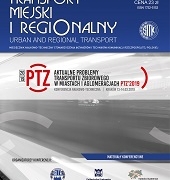
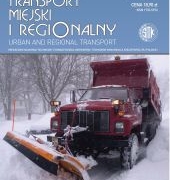 SITK RP
SITK RP 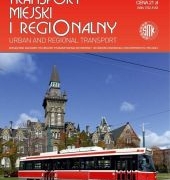 SITK RP
SITK RP 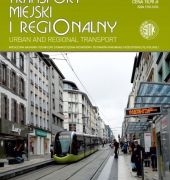 SITK RP
SITK RP 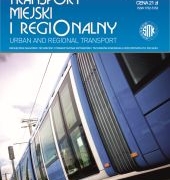 SITK RP
SITK RP 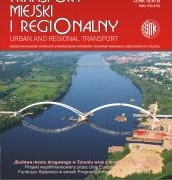 SITK RP
SITK RP 
 SITK
SITK Wydawnictwa SITK RP
Wydawnictwa SITK RP